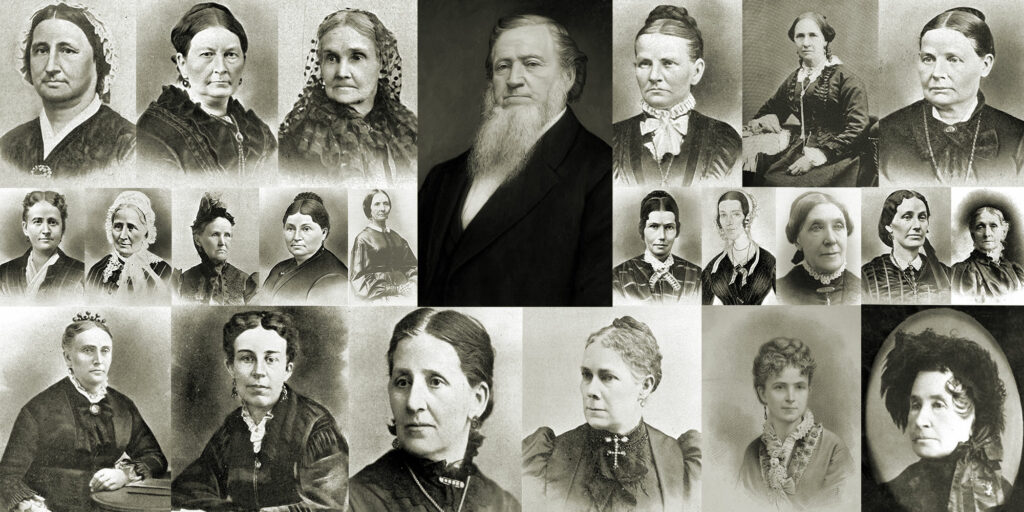Welcome to the definitive second installment of our series exploring the temple recommend’s evolution as the LDS Church expanded and its membership flourished. This discussion navigates the emotionally charged and often polarizing terrain of the temple recommend’s criteria. Our investigation has unequivocally identified two pivotal themes: the indispensable role of tithing in securing a temple recommend, and the profound divergence in perspectives regarding polygamy within the temple recommend interview.
The Evolution of Temple Recommend Interview Questions
The temple recommend interview process within the Church of Jesus Christ of Latter-day Saints (LDS Church) stands as a testament to the church’s ongoing journey through doctrinal, cultural, and societal evolution. This process, vital for members seeking to enter the church’s temples, has historically served as a gauge of one’s adherence to church teachings and personal righteousness. However, as the church has matured and navigated the complexities of an ever-evolving global landscape, the nature and focus of the temple recommend interview have significantly transformed.
In its inception, the interview process was predominantly centered on assessing personal conduct and integrity, with questions designed to ensure that members lived in accordance with the church’s moral teachings. This period reflected a simpler time, where the primary concerns were individual behavior and personal piety within a relatively homogeneous cultural and doctrinal landscape.
Polygamy & Apostasy Definition Changes
As the church expanded, both in numbers and in its interaction with diverse cultures and ideologies, so too did the scope and depth of the temple recommend interview. A notable example of this evolution is the church’s shifting stance on polygamy. Originally, during the 19th century, the practice of polygamy was not only accepted but also encouraged among church leaders as a tenet of faith. However, following the Manifesto of 1890, which officially discontinued polygamy, and subsequent clarifications in the early 20th century, the church’s position evolved significantly. Today, any association with or practice of polygamy is strictly prohibited and is grounds for excommunication. This transition underscores a broader willingness to adapt doctrinal practices in response to legal, societal, and internal pressures.
Moreover, the concept of apostasy within the church has seen a considerable expansion. Initially, apostasy was primarily associated with individuals or groups who continued to practice polygamy after it was officially abandoned by the church. Over time, however, the definition has broadened to encompass a wider array of perceived dissent, including doctrinal disagreements and participation in groups or movements seen as contrary to church teachings. This shift reflects the church’s efforts to maintain doctrinal purity and unity in the face of diverse challenges and opinions within its ranks.
The evolution of the temple recommend interview is emblematic of the LDS Church’s dynamic response to changing societal norms, internal developments, and doctrinal refinements. It has become more than just a mechanism for determining worthiness; it is a reflection of the church’s adaptability (or lack of it) and its stance in addressing both external and internal pressures.

Intersection of Tithing, Perceived Loyalty, and Church Stability
The concept of tithing, the embodiment of perceived loyalty, and the overarching aim for church stability form a complex and deeply interconnected web within the fabric of religious organizations. Tithing, in its essence, is not merely a financial obligation; it is a profound expression of faith and dedication to the church’s mission. This practice, rooted in ancient traditions, serves as a clear and tangible indicator of the commitment and allegiance that members feel towards their religious community. By contributing a portion of their income, members participate in a collective effort to sustain and support the church’s endeavors, from its day-to-day operations to its broader missions, including social programs, charitable work, and evangelistic outreach.
This financial support through tithing is critical, providing the necessary resources for churches to function effectively and pursue their objectives. It enables the maintenance of places of worship, the organization of community services, and the facilitation of religious ceremonies—activities that are central to the church’s role in the lives of its members and in the wider community. Furthermore, regular tithing establishes a stable financial foundation, allowing churches to plan and implement long-term projects and initiatives aimed at growth and development.
Financial Stability and Ongoing Tithes
While many things have changed within the temple recommend process, the one thing that has never been removed is the payment of tithes. The church’s coffers are filled to the brim, and yet, many are asked to sacrifice basic necessities to obey the law of the tithe. Joseph F Smith talked of the day when members won’t be required to give. He said this,
“…we expect to see the day when we will not have to ask you for one dollar of donation for any purpose, except that which you volunteer to give of your own accord, because we will have tithes sufficient in the storehouse of the Lord to pay everything that is needful for the advancement of the kingdom of God.”
Joseph F. Smith Conference Report, Apr. 1907, p. 7
So, why does the church still require tithes to enter the temple? Consider this:
The stability of a church is intricately linked to the loyalty and support of its members. It is a reflection of their collective willingness to invest in the church, not only financially but also emotionally and spiritually. The relationship between tithing, loyalty, and stability is symbiotic, with each element reinforcing and depending on the others.
In this light, the practice of tithing and the expression of loyalty are fundamental to the church’s ability to maintain its stability and commitment. They express the deep connection and commitment that members feel towards their church, demonstrating their readiness to support and uphold its mission. Tithing is a way to bind members to the church and help them feel as though they are a part of its ongoing mission.

Understanding the Shift from Polygamy to Personal Beliefs in LDS History
The Church of Jesus Christ of Latter-day Saints (LDS Church) originally adopted and openly practiced polygamy in the early 1840s, considering it a divine commandment. This practice was publicly announced in 1852 and was a significant part of LDS Church life until the end of the 19th century. However, facing intense legal and social pressure from the United States government, which threatened the church’s survival by enacting anti-polygamy laws and considering severe sanctions against the church, LDS Church President Wilford Woodruff issued the 1890 Manifesto. This document officially ceased the practice of polygamy among church members, marking a pivotal shift in the church’s teachings and practices.
Following the 1890 Manifesto, the LDS Church issued a Second Manifesto in 1904, reinforcing the ban on polygamy and threatening excommunication for those who continued the practice. Since then, the LDS Church has maintained a strict policy against polygamy, actively distancing itself from fundamentalist groups that continue the practice. Today, the church emphasizes this stance, underscoring that any members advocating for or practicing polygamy are subject to disciplinary action, including excommunication, highlighting the church’s significant doctrinal and cultural shift away from its early polygamous practices.
In the podcast, we dive into the changing doctrines of polygamy and how those doctrines influenced the questions asked in the temple recommend and the “correct” answers of the time.
Is it a Yes or a No?
Over time, as the Church’s stance on polygamy evolved, the questions in the temple recommend interviews changed to reflect the Church’s current doctrines and policies, including its position on polygamy.
In the early years of the LDS Church, when polygamy was practiced, the temple recommend questions were focused on support and adherence to the principles and commandments of the church as understood at the time, including the practice of polygamy for those who were commanded to live it.
Following the issuance of the 1890 Manifesto, which officially discontinued the practice of polygamy within the LDS Church, and especially after the 1904 Second Manifesto, which reinforced the ban and initiated strict measures against new polygamous unions, the temple recommend questions began to reflect this significant doctrinal shift. Members would be asked about their compliance with the laws of the church, including whether they supported or engaged in any teachings or practices contrary to those of the LDS Church, specifically including polygamy.
Over time, as the LDS Church continued to distance itself from polygamous practices, the temple recommend questions evolved to more explicitly inquire about members’ affiliations or sympathies with groups or individuals practicing or teaching polygamy. This was done to ensure that members seeking temple recommends were in full compliance with the Church’s current teachings and policies, including the strict prohibition against polygamy.
What are Your Feelings on the Temple Recommend Shifts?
So, what are your thoughts? Is tithing an important requirement for fully supporting a community where you worship? Does it support a “pay-to-play” narrative? What are your thoughts about the evolving requirements regarding the support of polygamy?

